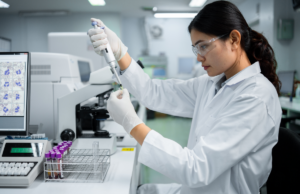Why Does Innovation and IP Matter to Southeast Asia?

Southeast Asia is a dynamic region that is home to more than 600 million people. Countries across the region are experiencing rapid economic growth, with many playing key roles in the global economy. This growth is due in part to ambitious economic development plans that prioritize innovation. For example, Indonesia has unveiled the Masterplan for the Acceleration and Expansion of Indonesia’s Economic Development (MP3EI), a government-led initiative that seeks to promote sustainable and inclusive growth by enhancing its domestic innovation ecosystem. Thailand has introduced its Innovation Thailand initiative, aimed at fueling economic growth, combating inequality and arresting environmental degradation through domestic innovation. But to drive innovation, the proper policy infrastructure is critical and intellectual property (IP) protection is a key component.
But why is IP so important? Simply put, IP helps foster ideas and protect the inventors behind innovation. To continue the region’s growth, policymakers in Southeast Asia must prioritize robust IP protections and other pro-innovation policies. Doing so will contain costs, incentivize investment and create a healthier and more prosperous population.
COMPETITION & COST CONTAINMENT:
IP protections serve as a legal framework that enables inventors to commercialize their innovations. This framework fosters competition within the market, driving the development of new and improved products. In the biopharmaceutical industry, for example, IP protections support the development of generic alternatives. As a result of increased competition, costs for consumers and government purchasers alike can decrease.
Patents are a prime example of how IP protections can encourage innovation and competition. Inventors are required to publicly disclose information about their creations in exchange for exclusive rights for a limited period. This not only promotes further innovation and research by helping competitors innovate around patented ideas, processes and products, but also allows for the development of alternatives once the patent has expired. Also, regulatory data protection is an important IP right which provides a period of protection for clinical trial and other test data a biopharmaceutical innovator must submit to a government regulator to prove a new medicine is safe and effective for patients and to receive marketing approval. Upon termination of the period of protection, it allows generic or biosimilar manufacturers to rely on the originator’s regulatory data to secure approval for their product.
INCREASED INVESTMENT:
A strong IP environment incentivizes investment and strengthens the economy across industries. This, in turn, promotes a knowledge economy, in which innovation and application become the key drivers of growth.
Additionally, establishing an effective IP framework encourages Foreign Direct Investment (FDI). Private companies are attracted to countries with strong IP infrastructure, as it provides a level of certainty and protection for their investments. This leads to increased investment, which helps expand employment and the overall economy. The United Nations’ World Investment Report notes that Southeast Asia’s FDI grew 44% to $175 billion between 2020 and 2021, The rise was due, in part, to investment in innovative industries, like the digital economy, which rely on strong IP rights to thrive.
BETTER, HEALTHIER LIVES:
IP incentivizes the development of new and innovative products and technologies, which benefits the population by addressing unmet needs, boosting economic growth, raising living standards, and introducing better, more affordable products to the market. In health care, this can lead to the adoption of innovative therapies and treatments that improve health outcomes and quality of life.
For example, IP protections enable quicker and more comprehensive access to medications. Between 2012 and 2021, the Asia Pacific region had an average delay of 36 months before new medications became available after their global launch, and only 20% of all medications were accessible in the region. That’s a stark contrast to markets with a robust IP ecosystems. For example, The United States had only a four-month delay, and 85% of new medicines were accessible. Establishing a comprehensive IP framework would facilitate access to medication by incentivizing research and development of new therapeutics and by encouraging partnerships to expand access.
Innovation is a major indicator of growth in the global economy, and IP is a critical tool for fostering progress and protecting innovators to advance needed solutions. By enabling innovators to protect their ideas and creations, IP promotes research and development, investment and entrepreneurship, supporting job creation and economic growth. Across Southeast Asia, robust IP systems can benefit populations by encouraging competition, driving down prices and improving access to essential goods and services such as health care and medicines.
“Across Southeast Asia, robust IP systems can benefit populations by encouraging competition, driving down prices and improving access to essential goods and services such as health care and medicines.”


